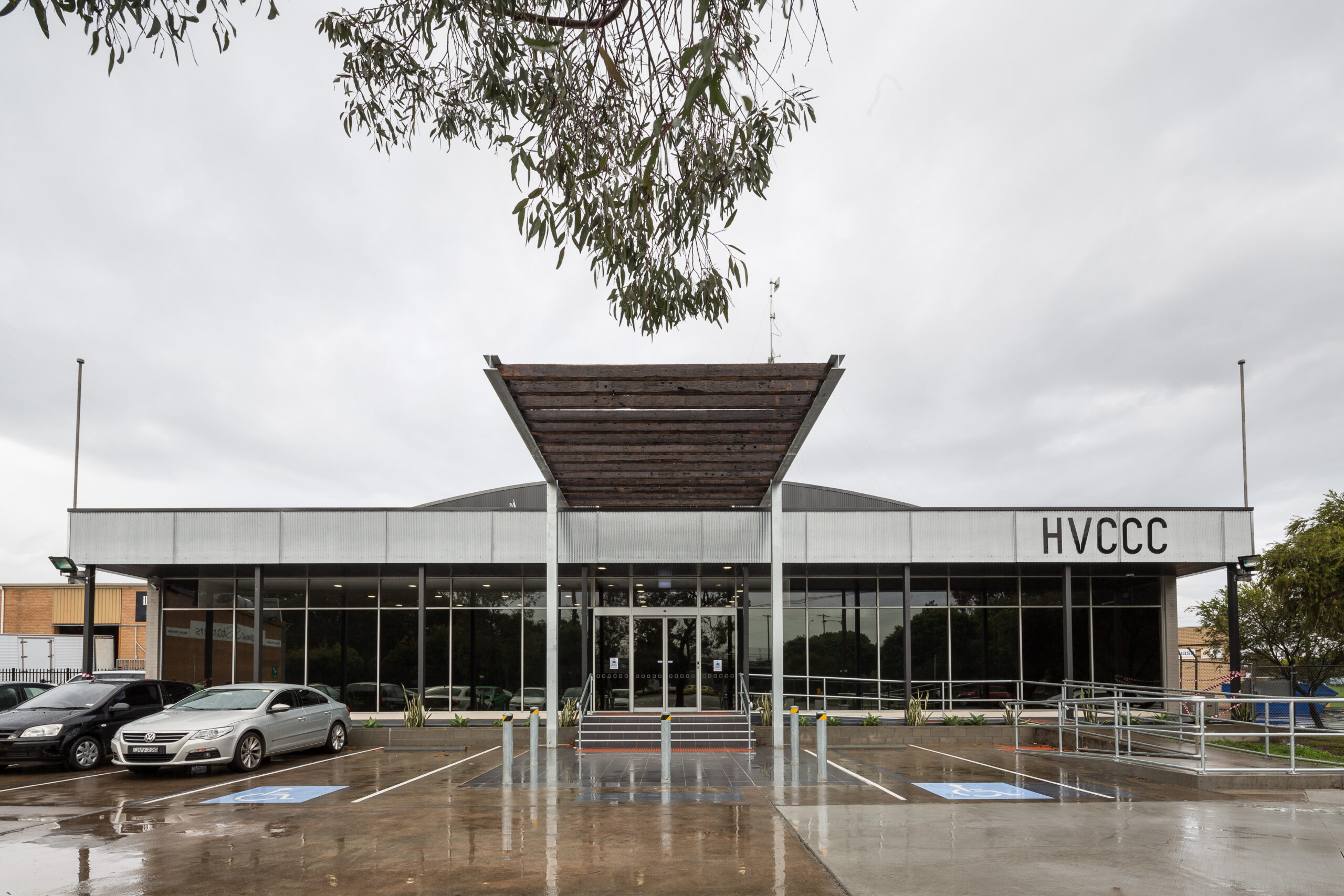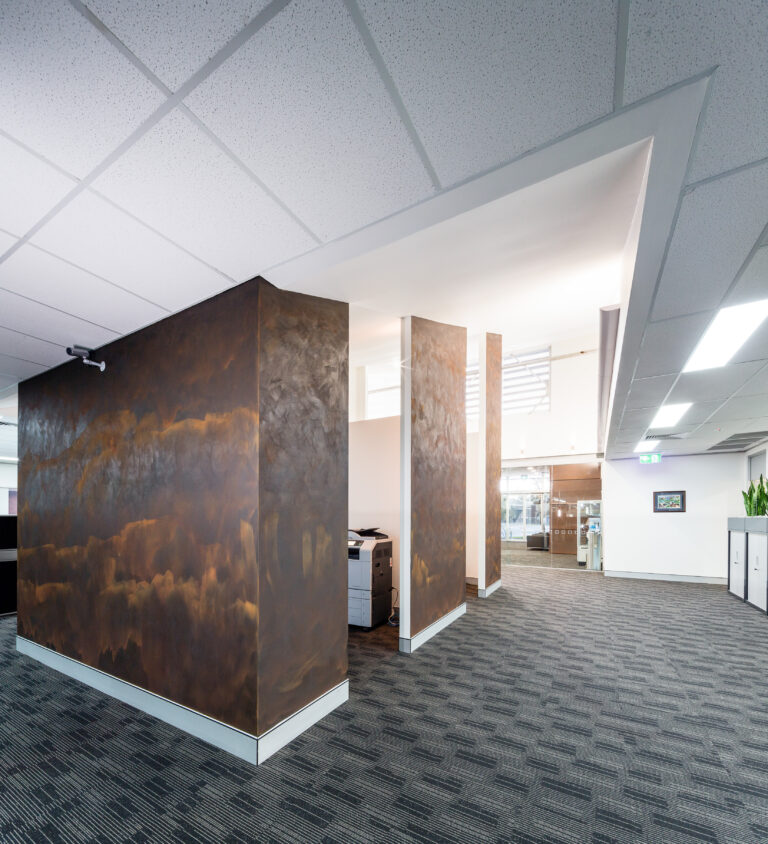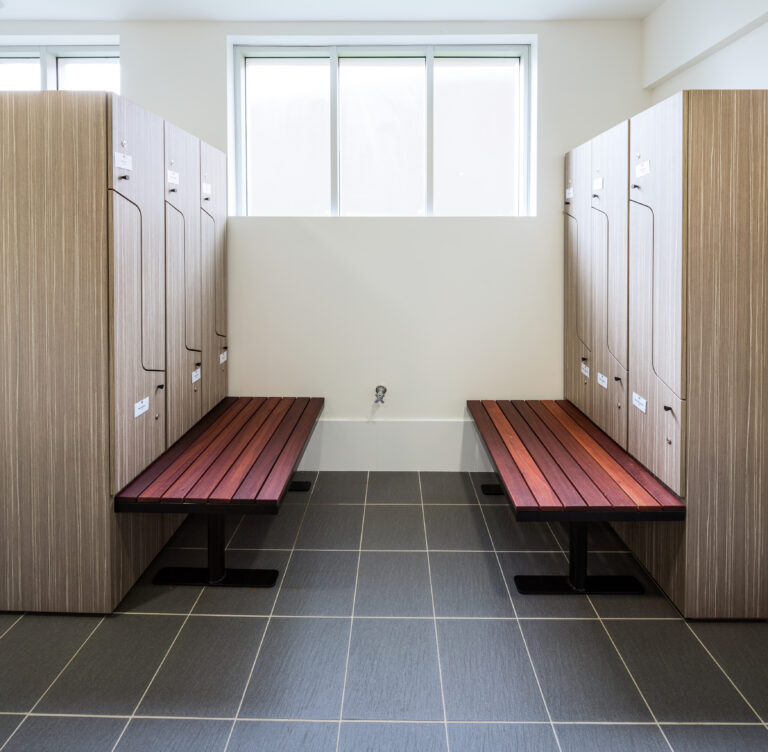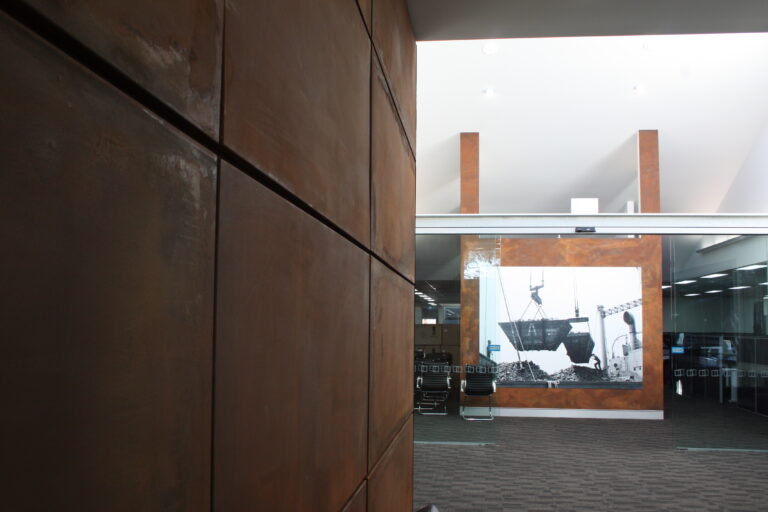Hunter Valley Coal Chain Coordinator
Builder
Kingston Building
Location
Broadmeadow, NSW
The Hunter Valley Coal Chain Coordinator (HVCCC) are
an organisation who are charged with coordinating all coal train movements from Hunter Valley to the loaders of Port Newcastle.
HVCCC wanted their new office to look professional but
not showy. Using raw and industrial materials a pallet was developed in galvanised mesh, corten steel and large recycled timber to highlight spaces. The finish is striking yet in keeping with the industrial background of the HVCCC.
The site for the HVCCC was a run down office/warehouse in
Broadmeadow. The existing building, a dark and cavernous monolith did not present well to the public domain. Two raking light wells in the ceiling are central to the buildings design. The north well, protected by timber blades, flood the building with light. These timber blades extend to define the front facade leading visitors in from the public domain.
Working within the existing building the program aimed to retain
much existing fabric from the original fit-out whilst making
selective changes to improve amenity. This included retaining
much of the original office including structure, cladding, existing
grid ceiling and some internal offices. The design reintroduces light deep into the building providing an improved working environment to workstations. Clerestory light wells at each end of the building provide a bright open space inviting to staff and visitors.
Working within the existing building drove the consultant team
to find creative solutions for existing services. Interestingly
the existing, yet recently replaced, air conditioning plant was
successfully reused despite initial problems.
Building reuse, materials reuse, natural light and power control are some sustainable elements of this project. Retaining the existing building fabric reduced embodied energy while recycled timber blades keep this down further. Carpet tiles were selected so when they reach their end of life can be selectively removed and replaced or incorporated into a new project. Natural light reduced the need for artificial lighting and users retained control of lighting through local switching. Lights and air conditioning are also tied to the security system, so that when armed at the end of each day, all lights and air conditioning power down from a single point of control.






